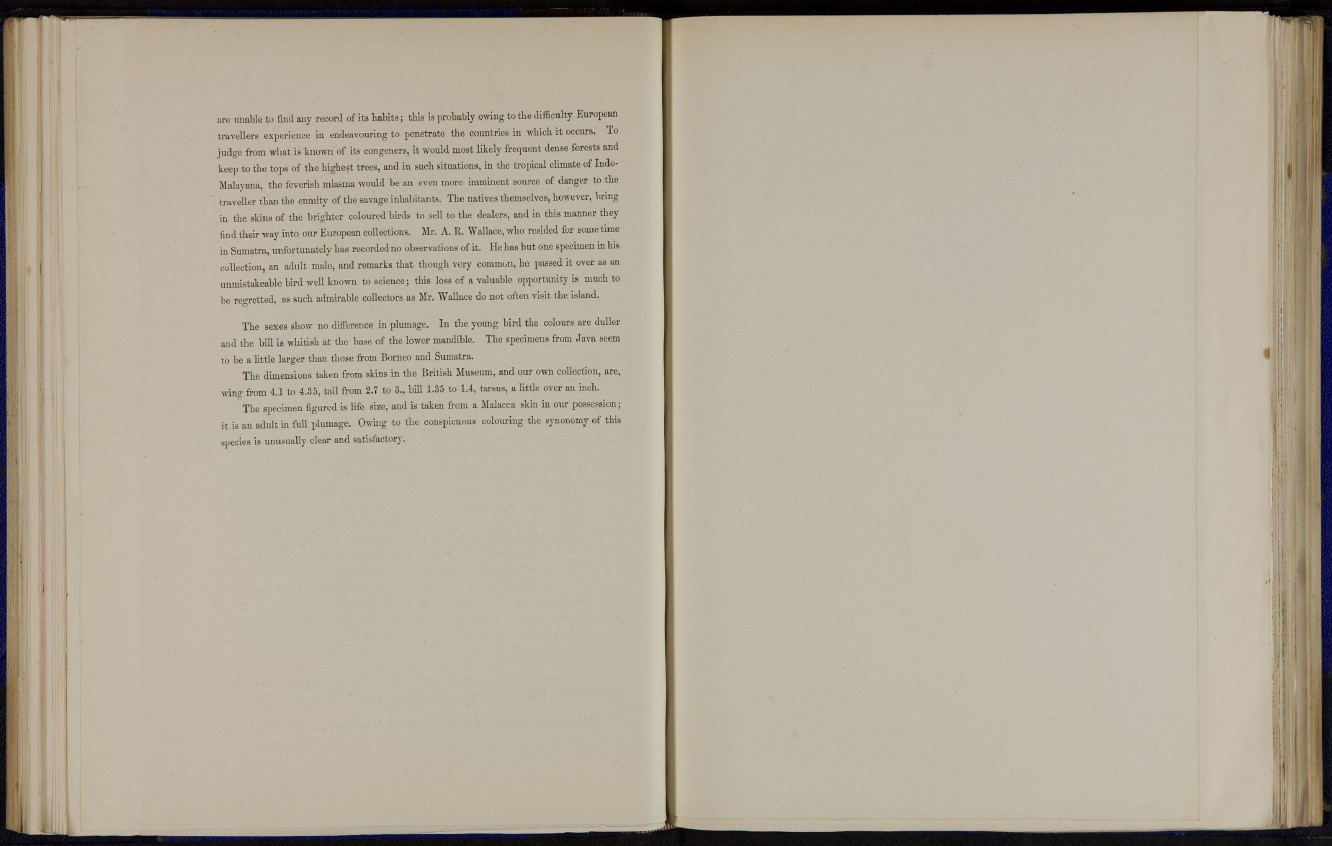
are unable t o find any record of its h a b i t s ; this is probably owing to t h e difficulty European
travellers experience in endeavouring to penetrate the countries in which it occurs. To
j u d g e from what is known of its congeners, i t would most likely frequent dense forests and
keep to the tops of the highest trees, and in such situations, in the tropical climate of Indo-
Malayana, the feverish miasma would be an even more imminent source of danger to the
traveller than t h e enmity of the savage inhabitants. The natives themselves, however, bring
in the skins of the brighter coloured birds to sell t o the dealers, and in t h i s manner they
find their way into our European collections. Mr. A. R. Wallace, who resided for sometime
in Sumatra, unfortunately has recorded no observations of it. He h a s b u t one specimen in his
collection, an adult male, and remarks that though very common, he passed it over as an
unmistakeable bird well known to science; this loss of a valuable opportunity is much to
be regretted, as such admirable collectors as Mr. "Wallace do not often visit the island.
The sexes show no difference in plumage. In the young bird the colours are duller
and the bill is whitish at the base of the lower mandible. The specimens from Java seem
to be a little larger than those from Borneo and Sumatra.
The dimensions taken from skins in t h e British Museum, and our own collection, are,
wing from 4.1 to 4.35, tail from 2.7 t o 3., bill 1.35 to 1.4, tarsus, a little over an inch.
The specimen figured is life size, and is taken from a Malacca skin in our possession;
it is an adult in full plumage. Owing to the conspicuous colouring the synonomy of this
species is unusually clear and satisfactory.